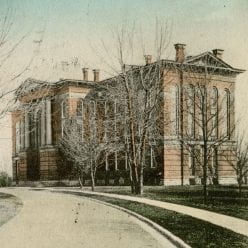James Barbour served on the first Board of Trustess of Centre College from 1819 to 1827. Barbour was a native of Orange County, Virginia, and belonged to an old English family, long distinguished in the affairs of the Old Dominion; he came to Kentucky, and located in Danville in 1795; followed mercantile pursuits; entered the army as captain in the War of 1812, and was promoted major of what was known as Barbee’s Regiment; was President of the branch Bank of Kentucky at Danville; was a Trustee and Treasurer of Centre College for many years. Also a Trustee and Treasurer of the Kentucky Deaf and Dumb Asylum (Kentucky School for the Deaf), and otherwise one of the most active and useful men of his day. He died in Danville in 1843.
Author: francisco.lacson
John Crepps
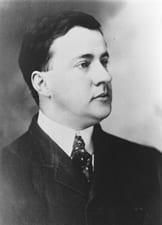
Date: 1869-1940
Senator from Kentucky; born in Wickland, near Bardstown, Nelson County, Ky., August 5, 1869; attended the Roseland Academy at Bardstown and Central University, Richmond, Ky.; high school principal; studied law; was admitted to the bar in 1889 and commenced practice in Bardstown in 1893; member, State house of representatives 1894-1898, serving as speaker in 1898; lieutenant governor of Kentucky in 1899, becoming Governor upon the death of the Governor, February 3, 1900; subsequently elected Governor for the unexpired term ending December 8, 1903, and reelected for the term 1903-1907; elected as a Democrat to the United States Senate in 1914 and served from March 4, 1915 to March 3, 1921; unsuccessful candidate for reelection in 1920; chairman, Committee on Expenditures in the Department of Labor (Sixty-fourth and Sixty-fifth Congresses); resumed the practice of law in Louisville, Ky.; unsuccessful candidate for Governor of Kentucky in 1927; unsuccessful candidate for nomination to the United States Senate in 1936; died in Louisville, Ky., January 9, 1940; interment in Frankfort Cemetery, Frankfort, Ky.
Robert A. Johnston
Date: 1814-1886
Rev. Robert A. Johnston was born on October 15, 1814, near Salisbury, North Carolina. He graduated from Centre College in 1838, and the next year entered Princeton Theological Seminary. In 1842 he took charge of the churches at Lancaster and Paint Lick. On April 27, 1843, he was married to Miss Ann Peachy Green, daughter of Judge Green, of Danville. In 1846 he began preaching at the Silver Creek Church, Madison County, having left the Lancaster church. In 1865 he moved to Danville to become a financial agent for Centre College and the Theological Seminary. He died on February 13, 1886, from the effects of a fall on the ice.
James McChord
Date: 1785-1820
James McChord was born on March 29, 1785, in Baltimore, Maryland. Five years later his family moved to Lexington, Kentucky, where McChord was able to take advantage of the many educational opportunities available in that growing town. He attended the Lexington Academy and graduated from Transylvania University in 1805. McChord began a study of law and politics under the direction of Henry Clay, but soon felt a call to the ministry. He enrolled in the new Associated Reformed Theological Seminary in New York City, graduating as class valedictorian in 1809.
One month following his graduation, McChord returned to Kentucky, and the remaining years of his life revolved around the ministry and scholarship. Licensed to preach in 1809, McChord was ordained in 1811. He was the founder and first minister of the Market Street or Second Presbyterian Church of Lexington. So prominent was McChord, that it was said that the “new church in Lexington was established there in 1815 largely for the purpose of obtaining his services on a permanent basis”. In addition to his duties as a minister, McChord was dedicated to education. He was elected to the Board of Trustees of Transylvania University in 1814 and served as a part-time professor of astronomy in the institution from 1813 until 1818.
In 1819 he was appointed principal of the Bourbon Academy, Paris, Kentucky. On March 4, 1820, the Board of Trustees of the newly chartered Centre College elected McChord as its first president, but he suddenly died on May 29, 1820, before ever assuming the presidency.
A popular minister and educator, McChord’s death was mourned throughout the state, and the Lexington church he founded briefly changed its name to the McChord Church. McChord was interred in a special vault in front of the pulpit of the church until 1920 when his body was reinterred in the Lexington Cemetery.
Charles B. Moran
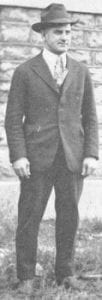 Date: 1878-1949
Date: 1878-1949
Charles Barthell (Uncle Charley) Moran, football coach and major-league baseball umpire, son of Thomas J. and Allison Moran, was born at Nashville, Tennessee, on February 22, 1878. He attended the University of Tennessee and subsequently spent many years in baseball, both in the major and minor leagues. He played in the Texas Leagueqv for Dallas, Corsicana, Waco, and Cleburne.
In 1903 and 1904 he served as manager for the Dallas Giants.
In 1906 he was playing for Cleburne when the team won the Texas League championship. Moran was a pitcher and catcher for the St. Louis Cardinals and for twenty-three years was an umpire in the National League. He umpired in the 1927, 1929, 1933, and 1938 World Series.
In 1939 he retired from National League umpiring. From 1909 to 1914 Moran coached football at Texas A&M. During his six seasons there the Aggies recorded thirty-eight wins, eight losses, and four ties, the best winning percentage at A&M up to that time. The rules governing player qualification were somewhat lax during Moran’s tenure at A&M. An athlete only had to attend a class for one day before a game to qualify for participation. During the 1909 season, the Aggies defeated their fiercest rival, the University of Texas, twice. Coach Moran was disliked at the University of Texas, and after 1911 UT refused to play A&M until he was replaced.
From 1912 to 1914 the two institutions did not play each other. When he came to A&M and a faculty member asked Moran what he was teaching his players about being good losers, he responded, “I didn’t come here to lose.” But Texas A&M was dependent on the Texas game, which usually brought in $10,000 to $15,000, to sustain its athletic program. Moran left A&M in December 1914. The 875 members of the Corps of Cadets at A&M gave him and his family a full-dress parade. Texas A&M and the University of Texas resumed their rivalry in 1915. Moran then coached football at Centre College, Bucknell University, and Catawba College.
In 1921, while he was coaching at Centre, he took his “Praying Colonels” to play Harvard, one of the leading teams in the country. Centre pulled off a 6-0 upset, a win cited as possibly Moran’s greatest. The next year the heavily favored Praying Colonels went to Dallas to play the Texas Aggies in the 1922 Dixie Classic. A&M won the game 22-14. In his college football coaching career, Moran won 122 games, lost 33, and tied 12, for a .766 winning percentage.
He was married to Pearl McGee. They had a son named Tom, who played professional football for the New York Giants in 1925.
Moran died of heart disease in Horse Cave, Kentucky, on June 14, 1949. In 1938 a “Charley Moran Day” was held at A&M. During the 1949 Thanksgiving Day game between the University of Texas and Texas A&M a plaque was dedicated to Moran and placed on the A&M campus. In 1968 Moran was named to the Texas A&M Athletic Hall of Fame.
Moran considered Horse Cave, Kentucky, his home from 1904 until his death there on June 14, 1949. He was buried there.
Nathan L. Bachman
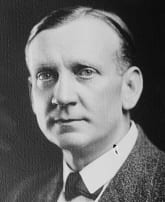 Senator from Tennessee; born in Chattanooga, Tenn., August 2, 1878; attended the public schools, Baylor Preparatory School for Boys, Chattanooga, Tenn., Southwestern Presbyterian University, Clarksville, Tenn., Central University, Danville, Ky., Washington and Lee University, Lexington, Va., and the University of Chattanooga Law School, Chattanooga, Tenn.; was graduated from the law department of the University of Virginia at Charlottesville in 1903, admitted to the bar in 1903, and began practice in Chattanooga, Tenn., in the same year; city attorney of Chattanooga 1906-1908; served as judge of the circuit court of Hamilton County, Tenn., 1912-1918; served as associate justice of the Supreme Court of Tennessee from 1918 until his resignation in 1924; unsuccessful candidate for nomination for United States Senator in 1924; resumed the practice of law the same year; appointed and subsequently elected as a Democrat to the United States Senate to fill the vacancy caused by the resignation of Cordell Hull; reelected in 1936 and served from February 28, 1933, until his death in Washington, D.C., April 23, 1937; interment in Forest Hills Cemetery, Chattanooga, Tenn.
Senator from Tennessee; born in Chattanooga, Tenn., August 2, 1878; attended the public schools, Baylor Preparatory School for Boys, Chattanooga, Tenn., Southwestern Presbyterian University, Clarksville, Tenn., Central University, Danville, Ky., Washington and Lee University, Lexington, Va., and the University of Chattanooga Law School, Chattanooga, Tenn.; was graduated from the law department of the University of Virginia at Charlottesville in 1903, admitted to the bar in 1903, and began practice in Chattanooga, Tenn., in the same year; city attorney of Chattanooga 1906-1908; served as judge of the circuit court of Hamilton County, Tenn., 1912-1918; served as associate justice of the Supreme Court of Tennessee from 1918 until his resignation in 1924; unsuccessful candidate for nomination for United States Senator in 1924; resumed the practice of law the same year; appointed and subsequently elected as a Democrat to the United States Senate to fill the vacancy caused by the resignation of Cordell Hull; reelected in 1936 and served from February 28, 1933, until his death in Washington, D.C., April 23, 1937; interment in Forest Hills Cemetery, Chattanooga, Tenn.
Source
Biographical Directory of the United States Congress
Kitty Baird
 Date: 1932-2014
Date: 1932-2014
Kitty Baird was associate director of athletics and professor of physical education at Centre College. Baird joined the college in 1959 and was instrumental in establishing varsity sports for women. She organized and/or coached teams in women’s basketball, field hockey, tennis, softball, and volleyball. Along with her teaching and coaching duties, Baird has served the college as intramural director, fitness consultant, and wellness instructor. Baird retired from Centre at the end of 1999, and was voted a member of Centre’s Athletic Hall of Fame in 2000.
Baird was a strong advocate of women’s sports throughout Kentucky. She was president of the Kentucky Association for Health, Physical Education, Recreation and Dance, and has received that organization’s Distinguished Service Award, as well as the W. Walter H. Mustaine Award, which is KAHPERD’s highest honor. Baird was a founder of the Kentucky Women’s Intercollegiate Conference (KWIC) and the second president of that organization. She has worked with the NCAA as a member of the Basketball Rules Committee and the Division III Membership Committee. In 1993, her service to women’s sports was honored with the Kentucky Pathfinder Award. From the National Association for Women Athletic Administrators, she received the Outstanding Administrator of the Year Award for the southern district.
Baird received her bachelor’s degree from Radford College, her master’s degree from the University of North Carolina at Greensboro, and her degree as an education specialist from Eastern Kentucky University. She has also studied as a postgraduate at the University of Kentucky. She is the author of Women Athletes Blazing a Trail: A History of Women’s Participation in Sport at a Small Liberal Arts College.
Men’s Basketball
Basketball was first played as an intercollegiate sport at Centre College during 1905-06. Credit for organizing the team is given to N.H. Dosker, who came to Centre in the fall of 1905, having played on the Male High School and Y.M.C.A. teams in Louisville. The biggest problem facing the early teams was a place to play. Old Boyle-Humphrey Gymnasium had been completed in 1890, but didn’t have a full-size court since basketball wasn’t being played at that time. The 1908-09 season was moved to a more spacious local skating rink, were Centre won the Intercollegiate Championship of Kentucky. The 1910 squad had a record of 20 wins and 3 loses, including two victories over Vanderbilt, and won its third consecutive Kentucky championship and the Southern Intercollegiate Championship.
In 1914 Boyle-Humphrey Gymnasium was completed, but in November of that year a fire completely gutted the building. Alumni and students rushed to raise money to rebuild the gymnasium, and by the opening of school in 1915 the new gymnasium was ready for use. The gymnasium floor was 55 by 80 feet, providing what was then considered ample space for basketball. Photographs show a poorly lit, cramped basketball court, with room for a limited number of spectators, who were seated right to the out-of-bounds lines. On March 3-4, 1916, the first Kentucky state basketball tournament was held in in the gym. The eight best teams in the state participated in the tournament, won by Henderson High School. On January 28, 1910, Centre defeated the University of Kentucky 87-17, the largest margin of defeat in UK’s basketball history.
The basketball teams of the late teens and early 1920s enjoyed considerable success. Several players who starred on the national ranked football teams of the Praying Colonels era also played basketball, including Bo McMillin, Norris Armstrong, and Red Roberts. The 1919 team was undefeated, with victories over Kentucky, Vanderbilt, Tennessee, and Louisville, and claimed the title of “Southern Champions.” The team included future U.S. Senator John Sherman Cooper and Western Kentucky University legendary basketball coach Ed Diddle. Centre defeated the University of Louisville 65-18 in 1919, which still ranks as Louisville’s largest margin of defeat in a basketball game.
Following the success of the early 1920s, Centre’s basketball program fell on hard times. Between 1930 and 1963, the team recorded only one winning season, that in 1931. One problem was an inconsistency in coaches: during a five year period in the 1930s, Centre had four head basketball coaches. Another was that when the team did have a head coach for more than a year or two, he was often also the head football coach. When this was the case, basketball practice didn’t begin until the football season was over, putting the team at a distinct disadvantage against its opponents.
The 1942-43 season was an abbreviated one due to the lack of traveling facilities and gasoline rationing. Centre didn’t field any athletic teams during 1944 and 1945. In 1950 a gymnasium/auditorium addition, named Alumni Memorial Building, was added to the back of the Boyle-Humphrey Gymnasium, substantially enlarging the seating capacity for basketball games.
In 1964 Lew Phillips became the head coach. In his first year the team posted a 14-8 record and was invited to the NCAA tournament. Centre lost to North Carolina A & T and Kentucky Wesleyan. Unfortunately this was Phillips’ only winning season. Prior to the 1969 season Tom Bryant was selected as the head coach.
Bryant was Centre’s men’s basketball coach from 1968 to 1996, and the school’s athletic director for 21 years. A 1955 graduate of Miami of Ohio, Bryant was a starter on three Miami teams that won conference championships, team MVP, and was named to the Mid-America All-Conference team. At Centre, Bryant won 389 games and 15 conference champions. He led Centre to the NCAA Division III Final Four twice, in 1979 and 1989, and to nine appearances in the Division III tournament. He was named Kodak Coach of the Year for the south district eight times in his career.
In his 13th year, Greg Mason is the current head coach. Mason, a 1994 Centre graduate and four-year starter on the basketball team, has a career record of 270-106, which ranks as one of the 15 best winning percentages in Division III history. Continuing the legacy of Tom Bryant, Mason’s teams have made 6 NCAA Division III tournaments, won 5 conference tournament titles, had 6 seasons of 20+ victories, in 2008 had the best record in school history (26-3), and has had 5 All-American selections.
In 1962 Boyle-Humphrey Alumni Gymnasium was renovated and expanded, with the building taking on a new name as Sutcliffe Hall. The building would later be renovated and expanded in 1981. Most of the original 1915 structure of Boyle-Humphrey Alumni Gymnasium was demolished as part of the 2004-2005 renovation and expansion of Sutcliffe Hall.
Irving Chapin Bartlett
Date: 1842-1893
Irving Chapin Bartlett, class of 1861, was born on December 19, 1842 in Clarksburg, Virginia (now West Virginia), the son of Phipps Waldo and Emily Byrd Chapin Bartlett. In 1844 the family moved to Kentucky where young Bartlett received his education, attending schools in Flemingsburg and Covington.
Bartlett entered Centre College in the fall of 1858. During his years as a student, Bartlett lived the life of a fairly typical student. He joined the Chamberlain Literary Society on campus, and during his senior year he served as censor for the society. For a while he boarded at the home of the college president, L. W. Green. Bartlett completed the full classical course and graduated on June 27, 1861.
Upon graduation, Bartlett joined the Confederate Army and served under John Hunt Morgan. He was wounded in 1863 during an engagement at Edgefield, Tennessee, the wound being serious enough for Bartlett to be discharged. By this time Bartlett had risen to the rank of lieutenant.
Bartlett moved to Louisville and took a position with the Second National Bank. After several years he left to become a partner in the wholesale whiskey firm of John Callahan & Company. The choice of the whiskey business is ironic in the light of his letter home from Centre talking about a meeting of students to boycott stores selling liquor. Later, Bartlett moved to an office with Bartley, Johnson & Company, another whiskey firm. On December 19, 1884, Bartlett married Ella Glazebrook, the daughter of a prominent Louisville businessman, Austin Glazebrook. The couple had one son, Austin Glazebrook Bartlett.
Bartlett was active in social and fraternal organizations, particularly the Masons, becoming a 33 Mason. He also served for a time as Eminent Commander of the Louisville Commandery of the Knights Templar. During a trip to French Lick, Bartlett took ill. He died there of heart failure on July 10, 1893. He was buried two days later in Cave Hill Cemetery in Louisville. He was survived by his wife, son, and parents.
Ormond Beatty
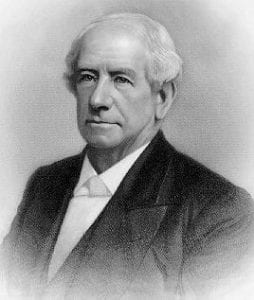
Date: 1815-1890
Ormond Beatty’s association with Centre College spanned nearly 60 years, from his entrance as a freshman in 1832 until his death in 1890. It was a career unparalleled in the school’s history. Beatty was born August 13, 1815, in Mason County, Kentucky, the fourth of five sons born to Judge Adam Beatty. Educated as a young man at the Franklin Academy in Washington, Kentucky, Beatty enrolled at Centre as a freshman in 1832. Having been advanced to the sophomore class during his freshman year, he graduated in 1835. Though President John C. Young immediately offered him a position as professor of chemistry and natural philosophy, Beatty decided to take additional studies at Yale under the direction of Benjamin Silliman.
Beatty returned to Centre in 1836 to become Professor of Chemistry and Natural Philosophy, a chair he held from 1836 until 1847. He was then appointed Professor of Mathematics, but five years later returned to his original position. Following the resignation of President William Breckinridge in 1868, Beatty was appointed president pro tem. In 1870 the Board of Trustees unanimously elected him Centre’s seventh president, as well as Professor of Metaphysics and Political Science. Several times during his tenure as president, Beatty offered to resign and return to teaching, but since he was the only member of the faculty with a permanent appointment, and seen as quite valuable to the college, the trustees would not accept his resignation. He faithfully served as president for eighteen years until the Board finally accepted his resignation in 1888. Beatty returned to the classroom as the new Professor of Metaphysics. The Board was so anxious to retain Beatty that he was only required to serve an hour a day lecturing.
As president, Beatty saw many years of steady growth, with only a few incidents. One that did occur, however, nearly ruined the college. In 1873 Centre lost over $100,000 in bonds, almost its entire endowment fund, when the Falls City Bank of Louisville was robbed. Although able to recover nearly $40,000 of the stolen bonds, Beatty quickly solicited funds from the community, church, and other subscribers to replace the lost money, and to avoid a potential financial disaster. During Beatty’s presidency the Old Main Building was constructed in 1871 at a cost of $60,000. Beatty also served on the Board of Trustees of the Danville Theological Seminary and Caldwell College, a school for women located in Danville.
Along with being a renowned scholar and administrator, Beatty was also known for his generosity, especially to needy students. Many students who needed financial help received it from Beatty’s own pocket. By the time of his retirement, no one knew how much he had contributed, not even Beatty himself. In poor health for much of his later life, Beatty died on June 24, 1890, and is buried in Danville’s Bellevue Cemetery.
